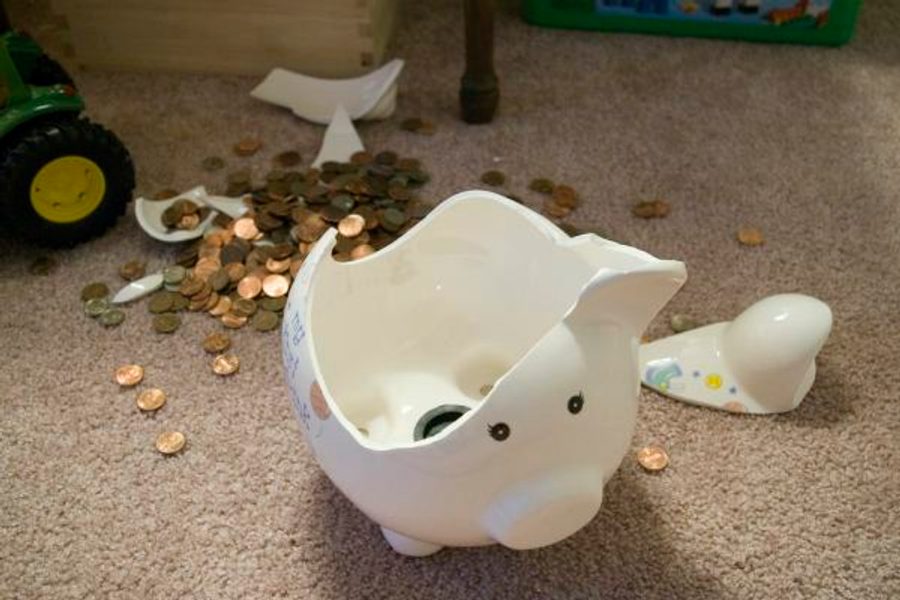
As the recession bottoms out, we’re slowly coming to understand how we got here: a country tethered to fraying lines of credit and Wall Street evangelism drowning households in debt. Yet, despite the hard lessons of the financial crisis (and the speculations of economic prophets), it appears that the recession is unlikely to inspire much frugality, and may just shove consumers further down the path of negative savings.
Is financial recklessness built into modern society’s DNA? Actually, research suggests that low-income families, who have the most to gain from long-term saving, know what’s at stake. But they’re often discouraged from building wealth by contradictory government policies, which keep poor families from moving up and limit the future prospects of their children.
A new study by Pew’s Economic Mobility Project shows a link between saving in low-income households and the economic mobility of their children. This may sound intuitive enough, but the process is actually inhibited by policies that discourage poor workers from holding onto their earnings.
Public policy and private markets act together to push working people into economic disenfranchisement, according to Pew researchers:
• Children of low-saving (i.e., below median), low-income parents are significantly less likely to be upwardly mobile than children of high-saving, low-income parents.
• Seventy-one percent of children born to high-saving, low-income parents move up from the bottom income quartile over a generation, compared to only 50 percent of children of low-saving, low-income parents.
Ironically, those who are already sitting atop a fat cushion of wealth have the easiest time fluffing it up. The benefits of tax policies and savings plans, like 401(k)s, are heavily skewed toward the wealthy. “Not only do low-income individuals often work for employers that do not offer access to savings plans,” the researchers conclude, “but they have lower marginal tax rates and have less interest in sheltering income from taxation.”
Among the poorest households, even when they have something to save, they’re pressured to trade off tomorrow for today. According to Pew, “Asset limits in public assistance programs discourage savings among low- and moderate-income families.”
The researchers found that state welfare systems have imposed various caps on how much a participating family can accrue in wealth. A few examples of counterintuitive, poverty-promoting eligibility rules for Temporary Assistance for Needy Families (TANF), as of 2007:
• Fifteen states exclude all vehicles in the household, 18 exclude one vehicle per household or per driver, and the rest only exclude a portion of any vehicle’s equity or fair market value;
• Eleven states employ an asset limit of $1,000, whereas two states — Ohio and Virginia — employ no limit;
• Some states exclude assets in restricted accounts such as 401(k)s and IRAs whereas other states count moneys in these accounts.
Though eligibility limits generally make sense as public policy, miscalculated rules undermine the rhetoric of 1990s welfare reform—the mythology of instilling “personal responsibility” in the poor.
While simply lifting asset limits wouldn’t automatically boost poor people’s savings (if they don’t have assets to save in the first place), Pew says that current state and federal policies force the poorest families into an untenable choice between chronic dependency and naked exposure to hostile economic forces.
Programs such as TANF are designed to provide temporary, targeted cash assistance to very low-income families who are required to actively pursue employment as a means to self-sufficiency…. Asset limits serve to undermine that goal by inhibiting families from accessing reliable transportation, preventing families from saving for short- and long-term needs, and discouraging the use of formal financial institutions such as banks and credit unions.
The same perverse cycle of marginalization drove the mortgage and credit crisis: poor families face pressure to pull themselves up by their bootstraps when the floor is falling out from under them. Our economic system and culture sanctifies hard work and ownership, yet equates self-worth with consumption.
Pew is pushing the Obama administration to expand federal savings programs and to make public benefits rules more compatible with long-term saving. Of course, such policies won’t really help poor people stow money away if they’re forced to live paycheck to paycheck.
According to the Economic Policy Institute, jobs that provide true financial security are dwindling. Today, less than 30 percent of all workers have good wages and solid benefits, and over the past 30 years, Black and Latino workers have suffered extreme loss of these opportunities.
The savings dilemma sharply displays the racial wealth gap. United for a Fair Economy points out that “for every dollar of net worth held by white households, African-American households on average have only 10 cents, and Latino households have 15 cents.” This trend, the group warns, will intensify as the foreclosure crisis drains home equity from struggling communities of color.
The White House is scrambling to get people working again, but it remains to be seen whether the new jobs programs will lead to real economic empowerment. As long as government policies restrain poor people from investing in their futures, another generation is set to forfeit its aspirations to the next economic crisis.
Michelle Chen is a contributing writer at In These Times and The Nation, a contributing editor at Dissent and a co-producer of the “Belabored” podcast. She studies history at the CUNY Graduate Center. She tweets at @meeshellchen.








